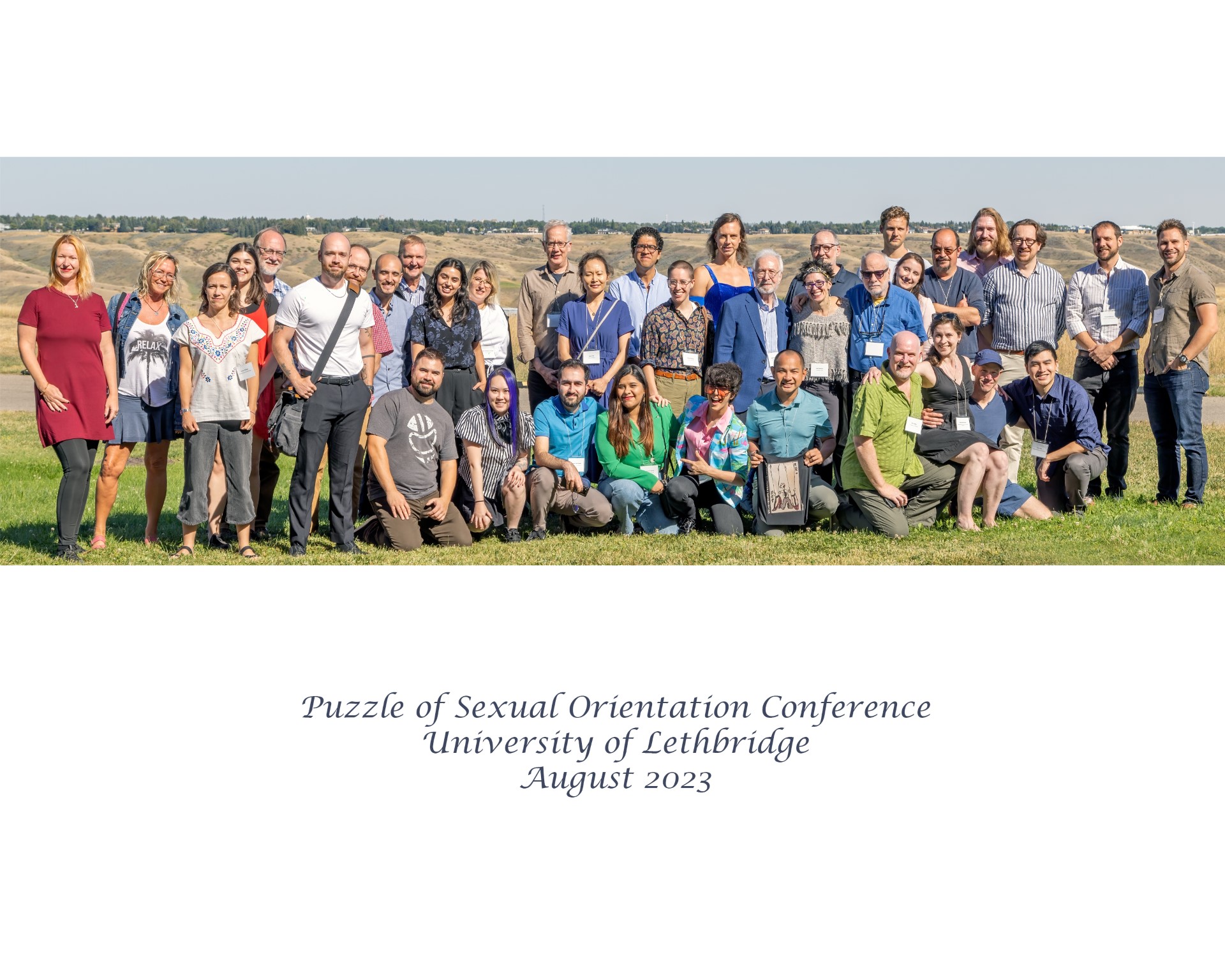While many attitudes about sexual orientation have changed dramatically in recent decades, sex researchers can still face immense backlash about their work.
It’s no wonder then that an invitation-only conference like the Puzzle of Sexual Orientation, recently held at the University of Lethbridge, drew leading sex researchers from around the world to discuss their work in the company of fellow scientists who are also seeking to build knowledge in the field.

“In the United States and certainly parts of Canada, during parts of the past decade especially, academia has become intellectually intolerant,” says Dr. Michael Bailey, a professor at Northwestern University in Evanston, Illinois who attended the conference. “In certain ways, people have valued so-called social justice and identity politics at the expense of knowledge seeking, particularly about controversial topics and our domain includes some very controversial topics.”
Organized by Dr. Paul Vasey, a professor in ULethbridge’s Department of Neuroscience, and Dr. Kelly Suschinsky (MSc ’07, PhD ’12), program evaluation coordinator at the Royal Ottawa Mental Health Centre, the conference drew 37 participants from as far away as South America, Europe, and Australasia.
“It’s the primary conference for researchers studying the biopsychology of sexual orientation broadly construed,” says Vasey. “These are the people who are advancing science in the area; these experts think about sexual orientations being more than just whether you’re attracted to men or women or both.”
Along with drawing world-class researchers, the conference was also a get-together for several ULethbridge alums who studied under Vasey and have gone on to establish their own successful careers.
Suschinsky’s work looks at how people respond to unwanted non-consensual sexual encounters. Some of her earlier work has shown that women can physically respond to fairly aversive stimuli while men don’t have the same response. Her research is geared toward finding out why men and women differ in this regard.
Dr. Francisco Gomez Jimenez (MSc ’17, PhD ’22), now a lecturer at Brunel University London, UK, concentrates his research on determining what aspects of same-sex sexuality are cross-culturally universal.
“What are the traits that same-sex attracted individuals, whether males or females, share across the world, which gives us some insight as to what the underlying biological components and etiology might be,” he says.
Dr. Scott Semenyna (MSc ’15, PhD ’20), an assistant professor at Stetson University in Florida, looks at cultures where feminine males and women compete for the same male partner, including the Istmo Zapotec in southern Mexico and the Polynesian island nation of Samoa. Another focus is examining how females with different sexual orientations can be objectively categorized.
During the conference, researchers addressed a wide range of topics. Bailey discussed his work in paraphilias, which are unusual sexual orientations or sexual interests, such as intense sexual arousal to atypical objects, situations, behaviours or individuals.
“This was the best meeting I think I’ve ever attended,” he says. “We had nonstop talks over three days and it was tiring intellectually and I was tweeting the talks. Nevertheless, I wouldn’t have left the room.”
A former student of Bailey’s, Dr. Gerulf Rieger, now at the University of Essex, Colchester, England, focuses his research on finding an objective measure of female sexual orientation, a task that is much easier with males.
Catherine Salmon, a professor of psychology at the University of Redlands in southern California, studies the differences between male and female reactions to erotica. At the conference, she discussed the factors, including sex differences, that influence people’s perceptions of sexual images.
Dr. Ken Zucker, a professor at the University of Toronto and editor of the Archives of Sexual Behavior, studies gender dysphoria in children and adolescents. His presentation was a meta-analysis of data across studies looking at the sex ratio of adolescents who have gender dysphoria or are identifying as transgender.
“One of the really new developments in the area of gender dysphoria over the past 15 years among adolescents is a marked increase in the number of adolescent girls who are saying that they’re transgender,” Zucker says. “The meta-analysis I conducted shows that this is something that is being observed universally, across North America, Western Europe, Scandinavia, Australia and China.”
Ray Blanchard, who retains the status of professor in the Department of Psychiatry at the University of Toronto, is a devoted attendee of the Puzzles conference. Blanchard studies the fraternal birth order effect, which is the finding that having older brothers increases the odds of homosexuality in later-born males.
The conference was made possible by funding from a SSHRC Connection grant, the American Institute of Bisexuality, the University of Lethbridge and private donors.
